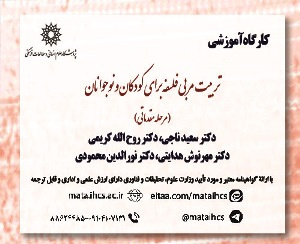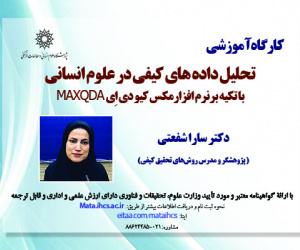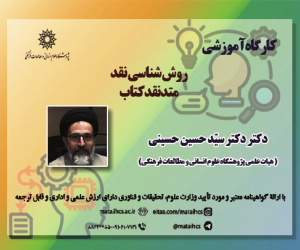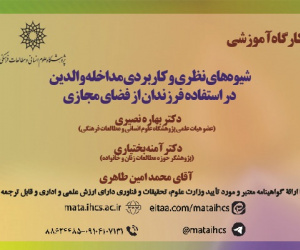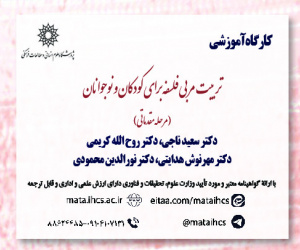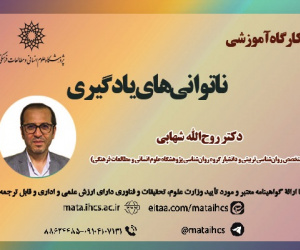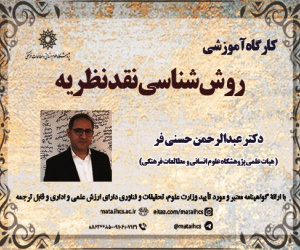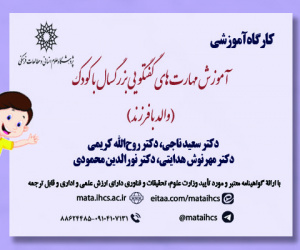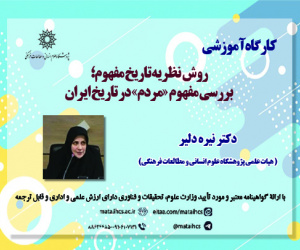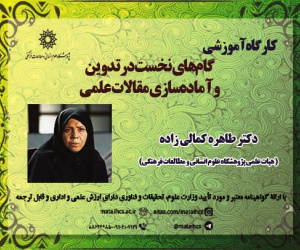نقش نمایش تعزیه در تعدیل روابط شاه و مردم در دوره ناصرالدین شاه قاجار (1264-1313ق) (مقاله علمی وزارت علوم)
درجه علمی: نشریه علمی (وزارت علوم)
آرشیو
چکیده
رابطه حاکمیت با مردم، در طول تاریخ و در همه سرزمین ها، با همه تفاوت هایی که ویژگی های تاریخی و سرزمینی می تواند در آن ایجاد کند حاصل شبکه هایی پیچیده در ساختار جوامع بشری است که خصوصیتی عام و فراگیر دارد. این شبکه های پیچیده که حاصل روابطِ قدرتِ بین انسان هاست به گونه ای تاریخی در سطوح مختلفِ روان فردی و اجتماعی انسان درونی شده است و کنش های روزمره بین حاکم و مردم را مدیریت می کند؛ کنش هایی که در نقش میانجی هایی تعدیل کننده این روابط را پایا و تحمل پذیر می کند. تعزیه، مهم ترین و منسجم ترین گونه نمایشی در ایران، ورای نقش های تثبیت شده برای یک فعالیت هنری مذهبی، چون بروز اعتقادات مذهبی و بازنمایی زندگی اولیاء دین و بزرگداشت آنان، نقشی تعدیل کننده در روابط شاه و مردم داشته است. در این مقاله تلاش شده تا با بهره گیری از نظریه شخصیت فروید در حکم ساختار نظری، نشان دهد که چگونه تعزیه نقشی تعدیلی در روابط شاه و مردم داشته است. بازه زمانی این تحقیق دوره حکمرانی ناصرالدین شاه قاجار است که دوران اوج نمایش تعزیه در ایران به شمار می آید. به نظر می رسد که نمایش مذهبی تعزیه نقشی قابل توجّه در تعدیل روابط شاه و مردم در این دوره داشته است؛ نقشی که در مورد هر یک از دو طرف رابطه برخاسته از انگیزه های متفاوت بوده است. در این پژوهش سعی شده است، تا با گردآوری اطلاعات به روش کتابخانه ای و با تکیه بر ساختار نظری پیش گفته، دلالت متون تاریخی درباره تعزیه، در بستر روابط شاه و مردم، توصیف و سپس تحلیل و تبیین شود.The role of Ta’zieh in the adjustment of the relationship between the king and the people during the kingdom of Naser-Addin Shah of Qajar dynasty (1847-1895)
The relationship between the rulership and the people, with all the significant differences that historical and territorial characteristics might cause, throughout history and in all territories, has always been the result of complicated networks existing in the intricate structure of human societies, which has a generic and pervasive feature. These complicated networks, which are the direct result of power relationships between people, have been internalized, historically, in different levels of individual and social spirits of human beings, and effectively manage the daily actions and interactions between the ruler and the people; the actions which, in the critical role of adjusting mediators, make these complex relationships permanent and tolerable over time. Ta’zieh, the most important and coherent type of play in Iran, besides the fixated role for an artistic-religious activity, such as expressing religious beliefs and the representation and commemoration of the saints of the religion, has also had an adjusting and mediating role in the relationship of the king and the people. The present study, meticulously applying Freud’s theory of personality as a theoretical structure, seeks to show how Ta’zieh has had a significant and adjusting role in the relationship of the king and the people. The specific time range considered in this research is the period of the rulership of Naser-Addin Shah of Qajar, which is widely considered as the historical climax of Ta’zieh in Iran. The religious play of Ta’zieh seems to have had a noticeable role in the adjustment of the relationship between the king and the people in this era, a role that has been caused by different motivations on behalf of either side of this relationship. The primary attempt of this study is to analyze and thoroughly explain the indication of historical texts about Ta’zieh in the broader domain of the relationship between the king and the people, by carefully applying the psychological theory mentioned earlier.Ta’zieh, the most important and coherent type of play in Iran, besides the fixated role for an artistic-religious activity, such as expressing religious beliefs and the representation and commemoration of the saints of the religion, has also had an adjusting and mediating role in the relationship of the king and the people. The present study, meticulously applying Freud’s theory of personality as a theoretical structure, seeks to show how Ta’zieh has had a significant and adjusting role in the relationship of the king and the people. The specific time range considered in this research is the period of the rulership of Naser-Addin Shah of Qajar, which is widely considered as the historical climax of Ta’zieh in Iran. The religious play of Ta’zieh seems to have had a noticeable role in the adjustment of the relationship between the king and the people in this era, a role that has been caused by different motivations on behalf of either side of this relationship. The primary attempt of this study is to analyze and thoroughly explain the indication of historical texts about Ta’zieh in the broader domain of the relationship between the king and the people, by carefully applying the psychological theory mentioned earlier.
